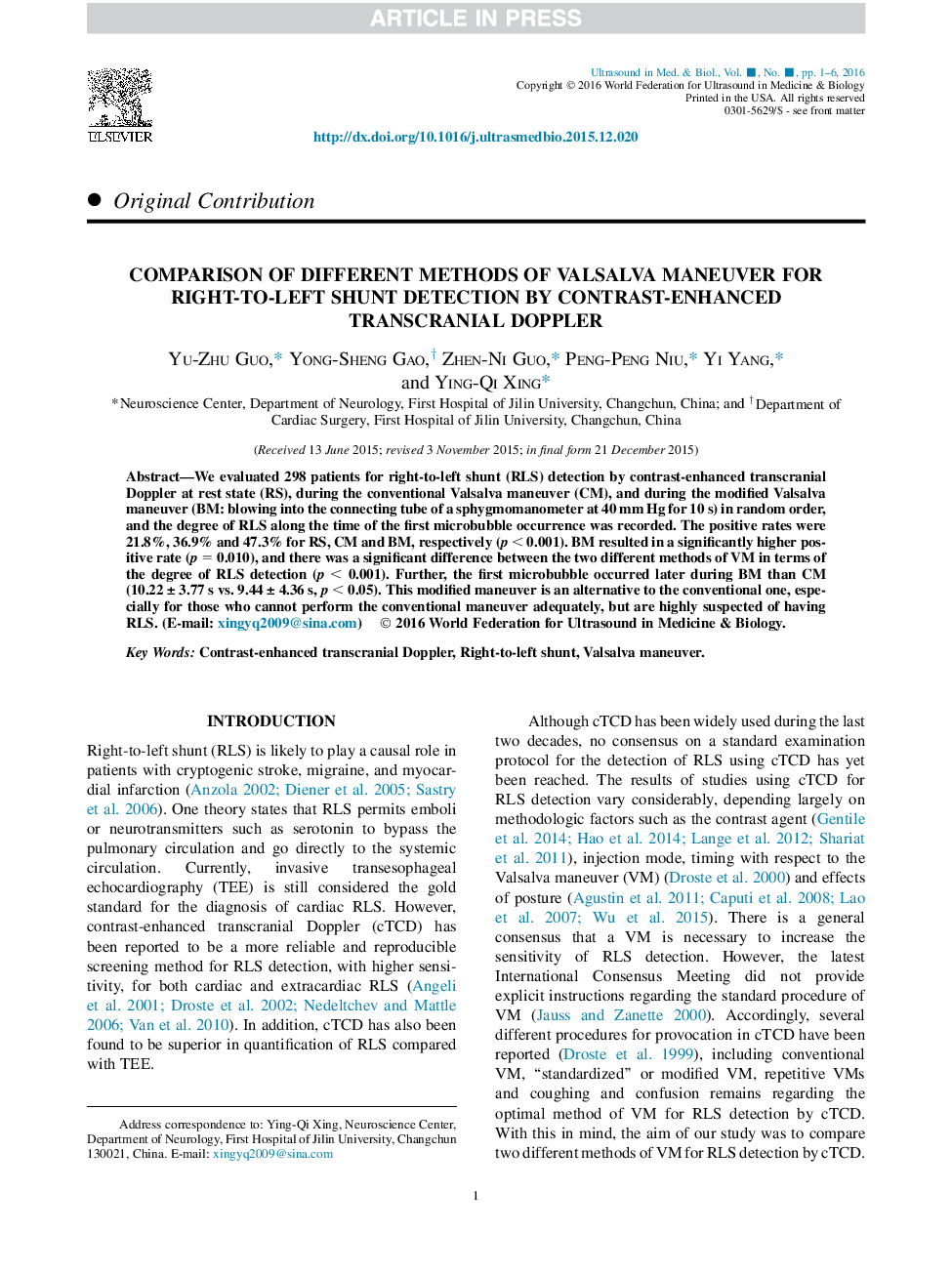| Article ID | Journal | Published Year | Pages | File Type |
|---|---|---|---|---|
| 1760211 | Ultrasound in Medicine & Biology | 2016 | 6 Pages |
Abstract
We evaluated 298 patients for right-to-left shunt (RLS) detection by contrast-enhanced transcranial Doppler at rest state (RS), during the conventional Valsalva maneuver (CM), and during the modified Valsalva maneuver (BM: blowing into the connecting tube of a sphygmomanometer at 40 mm Hg for 10 s) in random order, and the degree of RLS along the time of the first microbubble occurrence was recorded. The positive rates were 21.8%, 36.9% and 47.3% for RS, CM and BM, respectively (p < 0.001). BM resulted in a significantly higher positive rate (p = 0.010), and there was a significant difference between the two different methods of VM in terms of the degree of RLS detection (p < 0.001). Further, the first microbubble occurred later during BM than CM (10.22 ± 3.77 s vs. 9.44 ± 4.36 s, p < 0.05). This modified maneuver is an alternative to the conventional one, especially for those who cannot perform the conventional maneuver adequately, but are highly suspected of having RLS.
Keywords
Related Topics
Physical Sciences and Engineering
Physics and Astronomy
Acoustics and Ultrasonics
Authors
Yu-Zhu Guo, Yong-Sheng Gao, Zhen-Ni Guo, Peng-Peng Niu, Yi Yang, Ying-Qi Xing,
